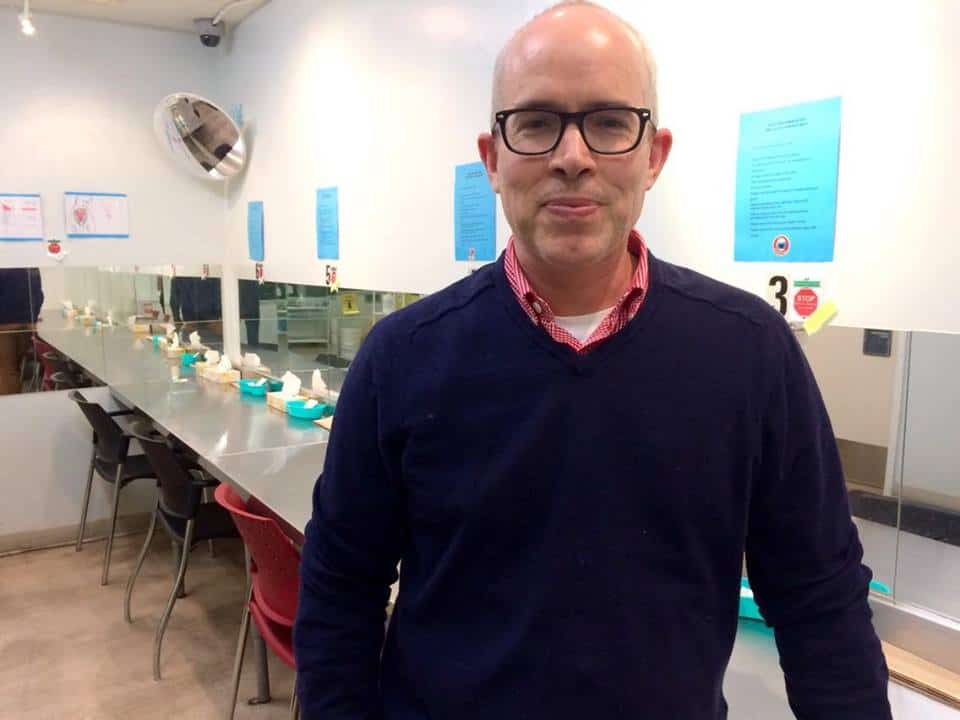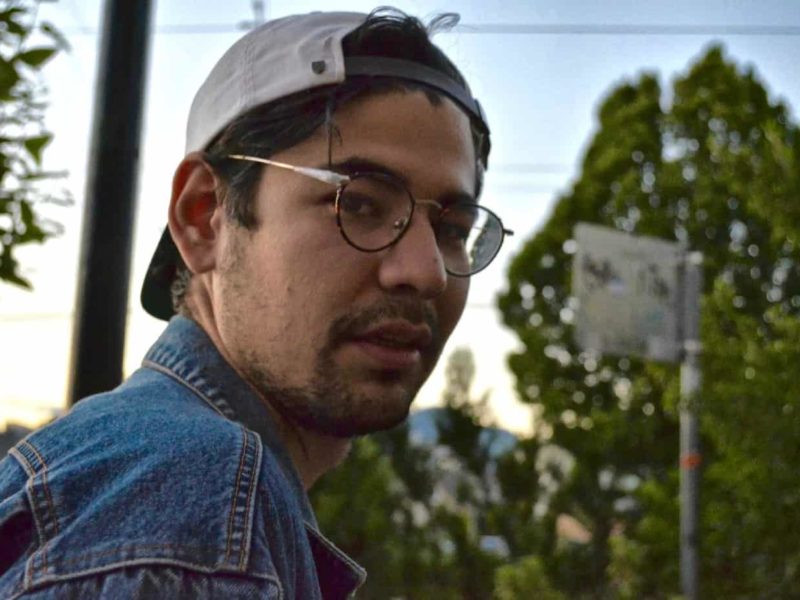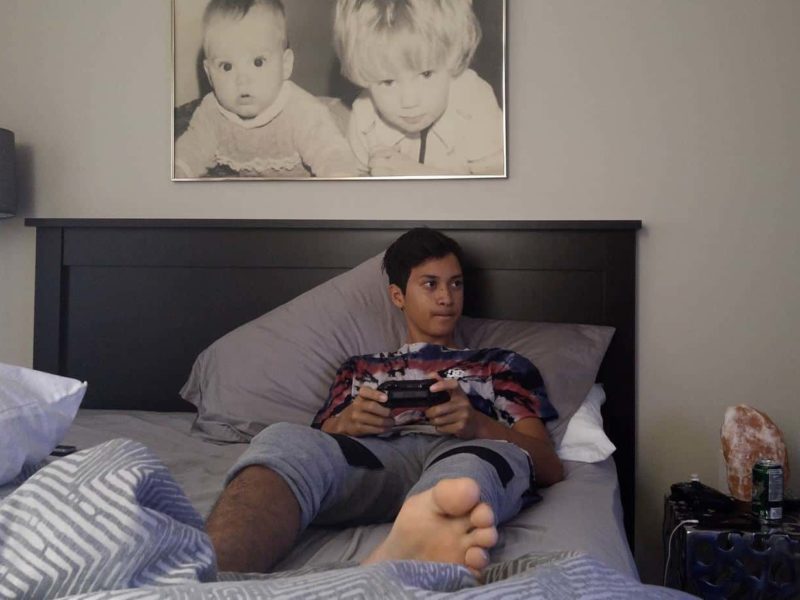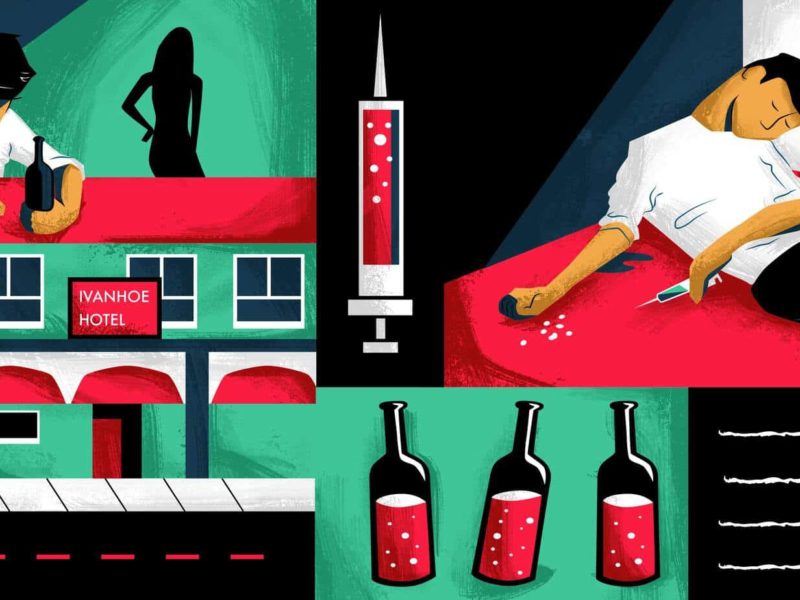
Tyler was found face down in a bathtub. He had overdosed on pure fentanyl. Through text messages he sent that day Jennens says she knows he was looking for heroin, to which his body had built up a tolerance. Had he gotten what he was looking for, Jennens believes her son would have lived.

The experience has changed her outlook on addiction and recovery. “Recovery doesn’t mean abstinence anymore,” she says. Jennens now believes in harm reduction and providing addicts with safe access to substances. There have been 1,103 overdose deaths in British Columbia alone in 2017, according to the BC Coroners Service. The deadly opioid fentanyl has been detected in approximately 83 per cent of those deaths. So, what can be done?
“I believe in providing medical grade heroin to the severely addicted. There are some people that are always going to need a drug of some kind. If we decriminalize it, we take two of the worst elements out of it: the drug dealer and the tainted drugs with fentanyl,” says Jennens who lost both of her sons to drug overdoses.
Jennens is not alone in the belief that providing drugs to drug users will save lives. On November 15, Canada’s Health Minister Ginette Petitpas Taylor announced that the federal government will support pharmaceutical heroin as part of a comprehensive treatment plan that could include other related services, such as primary health care and counselling.
“Our government is committed to addressing the opioid crisis and working with our partners to find innovative solutions to lower the epidemic of opioid-related overdoses in Canada,” Petitpas Taylor says. There were more than 2,800 overdose deaths across the country last year, and this year’s death count could exceed 3,000.
“It’s a huge step forward to saving lives,” says Mark Haden, Executive Director of the Multidisciplinary Association for Psychedelic Studies Canada (MAPS). Haden has worked in addiction services for nearly 30 years and is an advocate for not just prescription heroin, but for legalization of all drugs.
“Heroin addicts actually like heroin. They don’t particularly like methadone. So giving people what they want increases engagement significantly. If an addict has access to pure, pharmaceutical-grade heroin or street heroin, they will choose the pure, pharmaceutical grade heroin and so overdose deaths will go down dramatically,” Haden says.
Health and cost benefits
Ottawa has been quietly removing barriers for doctors to access prescription heroin for patients for over a year. Previously, doctors had to apply through a special access program to order heroin for each individual patient, one at a time. Now, under the Drugs for Urgent Public Health Need initiative, they can order up to one year’s supply to treat an entire jurisdiction.
This is how the Crosstown Clinic in Vancouver has been operating. At Crosstown, patients can inject themselves receive a prescribed dose of heroin up to three times per day. The clinic treats 130 severely addicted opioid users and is currently the only clinic in North America that offers injectable treatment.
“When they start with us, they are using illicit opioids every day out of the month and multiple times a day. Within six months of treatment, that’s down to four or less days per month. It’s not zero, but it’s a significant reduction,” says Dr. Scott MacDonald, lead physician at Crosstown.

In addition to health benefits for the drug user, MacDonald says there are cost benefits for society. He estimates it costs taxpayers approximately $25,000 a year to treat one patient at Crosstown. However, he estimates that the same drug user using illicit opioids on the street costs society upwards of $48,000 per year. A “cost of illness” analysis done with a group of untreated opiate users in Toronto in 2000 estimated that each user incurred $45,000 per year in societal costs.
“The bulk of that savings is in the criminal justice system. Reduced policing costs, court costs, incarceration costs,” says Macdonald of Crosstown’s efforts to keep patients off of street drugs.
And how many Crosstown patients have fatally overdosed inside the clinic or on the street? Zero. The problem? The waiting list is over 200. “We are never going to meet the need just here at Crosstown. We need more clinics,” says MacDonald. He estimates that between 1000–2000 severe opioid users in B.C. require injectable treatment.
The federal government’s new proposed changes would allow patients to receive prescription heroin outside of a hospital setting, opening up access for addicts across the country. This would also allow patients to balance their daily family and work responsibilities with their need to receive treatment.
Health Canada has opened up a 60-day comment period to seek advice on moving forward with the proposed changes.
The push for decriminalization of all drugs
Experts like Haden see the supervised model at Crosstown as something that should be implemented more broadly under a system where all drugs are legalized in Canada. “All drugs should be legalized. But they should be legalized in completely different paradigms based on public health principles, he says.

“What legalization looks like for heroin is probably going to be prescription access. What legalization looks like for Cannabis is probably storefront access. What legalization looks like for psychedelics is probably supervised access from somebody who understands how to navigate that terrain,” Haden says.
He points to countries around the world that have demonstrated benefits after moving away from a criminalization model, such as the Netherlands, Uruguay and the most commonly cited example in Portugal. Portugal decriminalized all illicit drugs in 2001. In 2000, the country had 318 overdose deaths. By 2013, that number had dropped to just 22.
This would solve waitlist problems, Haden theorizes, by taking money out of enforcing drug prohibition and putting it into addiction treatment services. “Right now all addictions services and all mental health services have waiting lists. All of them. The only answer is to shift how the money flows,” he says.
However, the federal government is not considering decriminalizing or legalizing hard drugs. In email statement, a representative from Health Canada wrote, “These types of treatments are administered under a doctor’s supervision to ensure that a patient is safe, and their ultimate goal is to support patients in improving their situation and ultimately to recover from substance use disorders. Decriminalization would not provide for any of those safeguards.”
“I think we should consider all options,” says MacDonald, when asked if Canada should work towards legalization beyond clinics like Crosstown. “I think providing it here in a medical context is a step towards regulation and decriminalization and maybe the next step that society can take.” [end]
This story was edited and fact-checked by Lindsay Sample with copy editing by Katie Lewis. Discourse’s executive editor is Rachel Nixon.
Author
Trevor Jang is an award-winning journalist and writer with a passion for Indigenous issues. He was a recipient of the 2016 CBC Indigenous Fellowship through the Canadian Journalism Foundation and a finalist for the 2016 British Columbia Association of Broadcasters Excellence in News Reporting award. Trevor spent two years hosting a radio show on Canada’s First Nations Radio (CFNR) Network in northern B.C. which focused on First Nations culture, music and issues. He is a mix of Chinese-Canadian and Wet’suwet’en descent.
Related Articles
Q&A: Ojibway artist on what it’s like to visualize addiction and trauma
Joshua Mangeshig Pawis-Steckley, the illustrator for Discourse's #KidsofAddiction series, talks his art and inspiration.
What happens when a child loses a parent to an overdose
One family’s struggle to find mental health support in the aftermath of addiction.
Kids of addiction
What my father's overdose death taught me.



